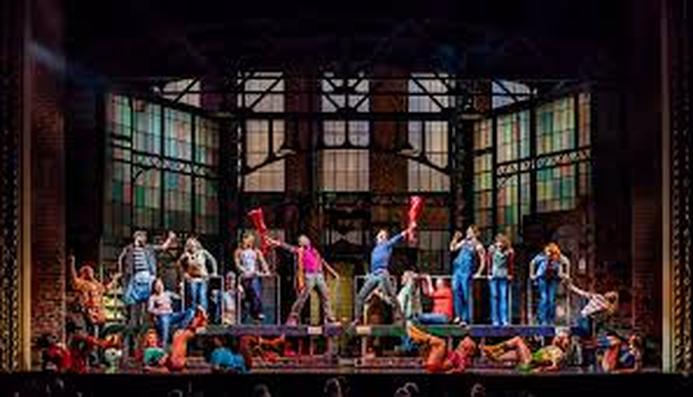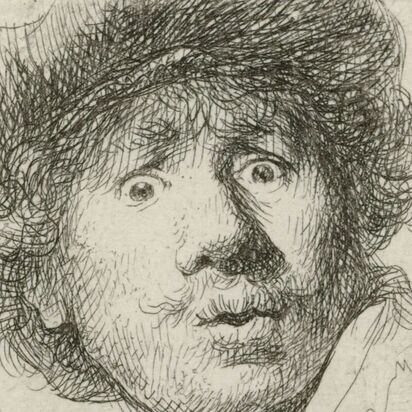MUSIC: Historical and Social Perspective
"Everybody say Yeah" from Kinky Boots
__________________________________________________________________
Lesson #9 (continued)
Music Historical Periods Wrap-Up
_______________________________________
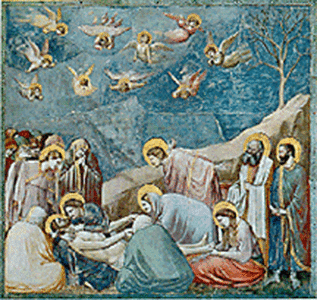
The Middle Ages
After the collapse of the Roman Empire in the 5th century AD, Western Europe entered a time known as "The Dark Ages" — a period when invading hordes of Vandals, Huns, and Visigoths overran Europe. These years were marked by constant warfare, the absence of a Holy Roman Emperor, and the virtual disappearance of urban life. Over the next next nine centuries, the newly emerging Christian Church came to dominate Europe, administering justice, instigating "Holy" Crusades against the East, establishing Universities, and generally dictating the destiny of music, art, and literature. It was during this time that Pope Gregory I is generally believed to have collected and codified the music known as Gregorian Chant, which was the approved music of the Church. Much later, the University at Notre Dame in Paris saw the creation of a new kind of music called organum. Secular music was performed throughout Europe by the troubadours and trouvères of France. And it was during these "Middle Ages" that Western culture saw the appearance of the first great name in music, Guillaume de Machaut.
After the collapse of the Roman Empire in the 5th century AD, Western Europe entered a time known as "The Dark Ages" — a period when invading hordes of Vandals, Huns, and Visigoths overran Europe. These years were marked by constant warfare, the absence of a Holy Roman Emperor, and the virtual disappearance of urban life. Over the next next nine centuries, the newly emerging Christian Church came to dominate Europe, administering justice, instigating "Holy" Crusades against the East, establishing Universities, and generally dictating the destiny of music, art, and literature. It was during this time that Pope Gregory I is generally believed to have collected and codified the music known as Gregorian Chant, which was the approved music of the Church. Much later, the University at Notre Dame in Paris saw the creation of a new kind of music called organum. Secular music was performed throughout Europe by the troubadours and trouvères of France. And it was during these "Middle Ages" that Western culture saw the appearance of the first great name in music, Guillaume de Machaut.
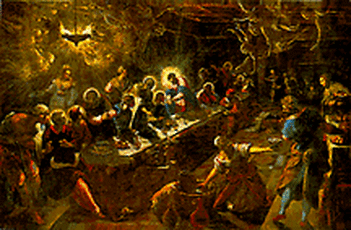
The Renaissance
Generally considered to be from ca.1420 to 1600, the Renaissance (which literally means "rebirth") was a time of great cultural awakening and a flowering of the arts, letters, and sciences throughout Europe. With the rise of humanism, sacred music began for the first time to break free of the confines of the Church, and a school of composers trained in the Netherlands mastered the art of polyphony in their settings of sacred music. One of the early masters of the Flemish style was Josquin des Prez. These polyphonic traditions reached their culmination in the unsurpassed works of Giovanni da Palestrina.
Of course, secular music thrived during this period, and instrumental and dance music was performed in abundance, if not always written down. It was left for others to collect and notate the wide variety of irrepressible instrumental music of the period. The late Renaissance also saw in England the flourishing of the English madrigal, the best known of which were composed by such masters as John Dowland, William Byrd, Thomas Morley and others.
Generally considered to be from ca.1420 to 1600, the Renaissance (which literally means "rebirth") was a time of great cultural awakening and a flowering of the arts, letters, and sciences throughout Europe. With the rise of humanism, sacred music began for the first time to break free of the confines of the Church, and a school of composers trained in the Netherlands mastered the art of polyphony in their settings of sacred music. One of the early masters of the Flemish style was Josquin des Prez. These polyphonic traditions reached their culmination in the unsurpassed works of Giovanni da Palestrina.
Of course, secular music thrived during this period, and instrumental and dance music was performed in abundance, if not always written down. It was left for others to collect and notate the wide variety of irrepressible instrumental music of the period. The late Renaissance also saw in England the flourishing of the English madrigal, the best known of which were composed by such masters as John Dowland, William Byrd, Thomas Morley and others.
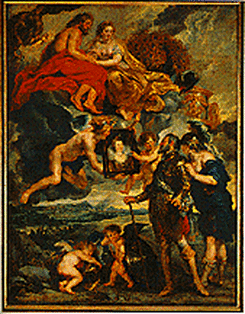
The Baroque Age
Named after the popular ornate architectural style of the time, the Baroque period (ca.1600 to 1750)saw composers beginning to rebel against the styles that were prevalent during the High Renaissance. This was a time when the many monarchies of Europe vied in outdoing each other in pride, pomp and pageantry. Many monarchs employed composers at their courts, where they were little more than servants expected to churn out music for any desired occasions. The greatest composer of the period, Johann Sebastian Bach, was such a servant. Yet the best composers of the time were able to break new musical ground, and in so doing succeeded in creating an entirely new style of music.
It was during the early part of the seventeenth century that the genre of opera was first created by a group of composers in Florence, Italy, and the earliest operatic masterpieces were composed by Claudio Monteverdi. The instrumental concerto became a staple of the Baroque era, and found its strongest exponent in the works of the Venetian composer Antonio Vivaldi. Harpsichord musicachieved new heights, due to the works of such masters as Domenico Scarlatti and others. Dances became formalized into instrumental suites and were composed by virtually all composers of the era. But vocal and choral music still reigned supreme during this age, and culminated in the operas and oratorios of German-born composer George Frideric Handel.
Named after the popular ornate architectural style of the time, the Baroque period (ca.1600 to 1750)saw composers beginning to rebel against the styles that were prevalent during the High Renaissance. This was a time when the many monarchies of Europe vied in outdoing each other in pride, pomp and pageantry. Many monarchs employed composers at their courts, where they were little more than servants expected to churn out music for any desired occasions. The greatest composer of the period, Johann Sebastian Bach, was such a servant. Yet the best composers of the time were able to break new musical ground, and in so doing succeeded in creating an entirely new style of music.
It was during the early part of the seventeenth century that the genre of opera was first created by a group of composers in Florence, Italy, and the earliest operatic masterpieces were composed by Claudio Monteverdi. The instrumental concerto became a staple of the Baroque era, and found its strongest exponent in the works of the Venetian composer Antonio Vivaldi. Harpsichord musicachieved new heights, due to the works of such masters as Domenico Scarlatti and others. Dances became formalized into instrumental suites and were composed by virtually all composers of the era. But vocal and choral music still reigned supreme during this age, and culminated in the operas and oratorios of German-born composer George Frideric Handel.
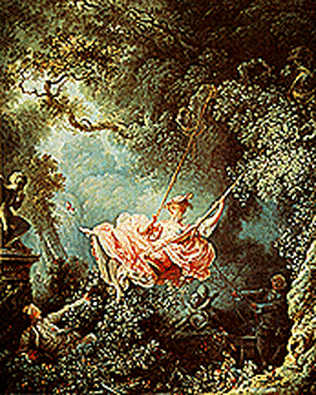
The Classical Period
From roughly 1750 to 1820, artists, architects, and musicians moved away from the heavily ornamented styles of the Baroque and the Rococo, and instead embraced a clean, uncluttered style they thought reminiscent of Classical Greece. The newly established aristocracies were replacing monarchs and the church as patrons of the arts, and were demanding an impersonal, but tuneful and elegant music. Dances such as the minuet and the gavotte were provided in the forms of entertaining serenades and divertimenti.
At this time the Austrian capital of Vienna became the musical center of Europe, and works of the period are often referred to as being in the Viennese style. Composers came from all over Europe to train in and around Vienna, and gradually they developed and formalized the standard musical forms that were to predominate European musical culture for the next several decades. A reform of the extravagance of Baroque opera was undertaken by Christoph von Gluck. Johann Stamitz contributed greatly to the growth of the orchestra and developed the idea of the orchestral symphony. The Classical period reached its majestic culmination with the masterful symphonies, sonatas, and string quartets by the three great composers of the Viennese school: Franz Joseph Haydn, Wolfgang Amadeus Mozart, and Ludwig van Beethoven. During the same period, the first voice of the burgeoning Romantic musical ethic can be found in the music of Viennese composer Franz Schubert.
From roughly 1750 to 1820, artists, architects, and musicians moved away from the heavily ornamented styles of the Baroque and the Rococo, and instead embraced a clean, uncluttered style they thought reminiscent of Classical Greece. The newly established aristocracies were replacing monarchs and the church as patrons of the arts, and were demanding an impersonal, but tuneful and elegant music. Dances such as the minuet and the gavotte were provided in the forms of entertaining serenades and divertimenti.
At this time the Austrian capital of Vienna became the musical center of Europe, and works of the period are often referred to as being in the Viennese style. Composers came from all over Europe to train in and around Vienna, and gradually they developed and formalized the standard musical forms that were to predominate European musical culture for the next several decades. A reform of the extravagance of Baroque opera was undertaken by Christoph von Gluck. Johann Stamitz contributed greatly to the growth of the orchestra and developed the idea of the orchestral symphony. The Classical period reached its majestic culmination with the masterful symphonies, sonatas, and string quartets by the three great composers of the Viennese school: Franz Joseph Haydn, Wolfgang Amadeus Mozart, and Ludwig van Beethoven. During the same period, the first voice of the burgeoning Romantic musical ethic can be found in the music of Viennese composer Franz Schubert.
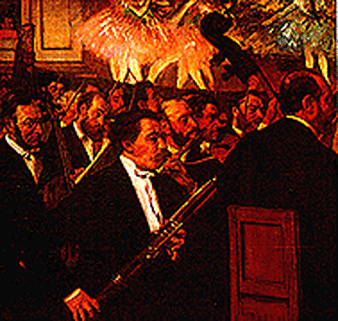
The Romantic Era
As the many socio-political revolutions of the late eighteenth-century established new social orders and new ways of life and thought, so composers of the period broke new musical ground by adding a new emotional depth to the prevailing classical forms. Throughout the remainder of the nineteenth-century (from ca. 1820 to 1900), artists of all kinds became intent in expressing their subjective, personal emotions. "Romanticism" derives its name from the romances of medieval times -- long poems telling stories of heroes and chivalry, of distant lands and far away places, and often of unattainable love. The romantic artists are the first in history to give to themselves the name by which they are identified.
The earliest Romantic composers were all born within a few years of each other in the early years of the nineteenth century. These include the great German masters Felix Mendelssohn and Robert Schumann ; the Polish poet of the piano Frédéric Chopin; the French genius Hector Berlioz ; and the greatest pianistic showman in history, the Hungarian composer Franz Liszt.
During the early nineteenth century, opera composers such as Carl Maria von Weber turned to German folk stories for the stories of their operas, while the Italians looked to the literature of the time and created what is known as Bel canto opera (literally "beautiful singing"). Later in the century, the field of Italian opera was dominated by Giuseppe Verdi, while German opera was virtually monopolized by Richard Wagner.
During the nineteenth century, composers from non-Germanic countries began looking for ways in which they might express the musical soul of their homelands. Many of these Nationalist composers turned to indigenous history and legends as plots for their operas, and to the popular folk melodies and dance rhythms of their homelands as inspiration for their symphonies and instrumental music. Others developed a highly personal harmonic language and melodic style which distinguishes their music from that of the Austro-Germanic traditions.
The continued modification and enhancement of existing instruments, plus the invention of new ones, led to the further expansion of the symphony orchestra throughout the century. Taking advantage of these new sounds and new instrumental combinations, the late Romantic composers of the second half of the nineteenth-century created richer and ever larger symphonies, ballets, and concertos. Two of the giants of this period are the German-born Johannes Brahms and the great Russian melodist Peter Ilyich Tchaikovsky.
As the many socio-political revolutions of the late eighteenth-century established new social orders and new ways of life and thought, so composers of the period broke new musical ground by adding a new emotional depth to the prevailing classical forms. Throughout the remainder of the nineteenth-century (from ca. 1820 to 1900), artists of all kinds became intent in expressing their subjective, personal emotions. "Romanticism" derives its name from the romances of medieval times -- long poems telling stories of heroes and chivalry, of distant lands and far away places, and often of unattainable love. The romantic artists are the first in history to give to themselves the name by which they are identified.
The earliest Romantic composers were all born within a few years of each other in the early years of the nineteenth century. These include the great German masters Felix Mendelssohn and Robert Schumann ; the Polish poet of the piano Frédéric Chopin; the French genius Hector Berlioz ; and the greatest pianistic showman in history, the Hungarian composer Franz Liszt.
During the early nineteenth century, opera composers such as Carl Maria von Weber turned to German folk stories for the stories of their operas, while the Italians looked to the literature of the time and created what is known as Bel canto opera (literally "beautiful singing"). Later in the century, the field of Italian opera was dominated by Giuseppe Verdi, while German opera was virtually monopolized by Richard Wagner.
During the nineteenth century, composers from non-Germanic countries began looking for ways in which they might express the musical soul of their homelands. Many of these Nationalist composers turned to indigenous history and legends as plots for their operas, and to the popular folk melodies and dance rhythms of their homelands as inspiration for their symphonies and instrumental music. Others developed a highly personal harmonic language and melodic style which distinguishes their music from that of the Austro-Germanic traditions.
The continued modification and enhancement of existing instruments, plus the invention of new ones, led to the further expansion of the symphony orchestra throughout the century. Taking advantage of these new sounds and new instrumental combinations, the late Romantic composers of the second half of the nineteenth-century created richer and ever larger symphonies, ballets, and concertos. Two of the giants of this period are the German-born Johannes Brahms and the great Russian melodist Peter Ilyich Tchaikovsky.
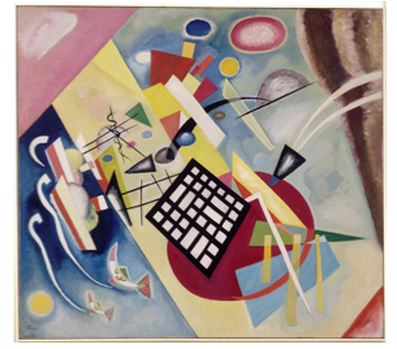
Music in the 20th Century
By the turn of the century and for the next few decades, artists of all nationalities were searching for exciting and different modes of expression. Composers such as Arnold Schoenberg explored unusual and unorthodox harmonies and tonal schemes. French composer Claude Debussy was fascinated by Eastern music and the whole-tone scale, and created a style of music named after the movement in French painting called Impressionism. Hungarian composer Béla Bartók continued in the traditions of the still strong Nationalist movement and fused the music of Hungarian peasants with twentieth century forms. Avant-garde composers such as Edgard Varèse explored the manipulation of rhythms rather than the usual melodic/harmonic schemes. The tried-and-true genre of the symphony, albeit somewhat modified by this time, attracted such masters as Gustav Mahler and Dmitri Shostakovich, while Igor Stravinsky gave full rein to his manipulation of kaleidoscopic rhythms and instrumental colors throughout his extremely long and varied career.
While many composers throughout the twentieth-century experimented in new ways with traditional instruments (such as the "prepared piano" used by American composer John Cage), many of the twentieth-century’s greatest composers, such as Italian opera composer Giacomo Puccini and the Russian pianist/composer Sergei Rachmaninoff, remained true to the traditional forms of music history. In addition to new and eclectic styles of musical trends, the twentieth century boasts numerous composers whose harmonic and melodic styles an average listener can still easily appreciate and enjoy.
___________________________________________________________________________________________
MUSIC HISTORY PERIODS Brief Recap
for M.Fish Music Appreciation
0000—Pax Romano. Roman Empire’s Golden Age of Peace
0200—Fall of the Roman Empire begins
0500—Collapse of the Empire
500—1420 MIDDLE AGES PERIOD
(Also Dark Ages, also Medieval Times)
Hordes of Huns and Vandals from the north invade the Empire
Feudal system with years of constant warfare
There is no longer a central government…no army or local officials for protection
No hospitals, orphanages, schools, colleges, libraries, etc.
Church begins to fill the void caused by the fall of the Roman Empire
Church becomes rich and all powerful
Crusades and Black Death and troubadours help change Europe
Gregorian Chant is established and organum begins to modify chant
A system of music notation is established (Guido of Arezzo)
1420—1600 RENAISSANCE (“Rebirth) PERIOD
Rome and Florence are important centers (Florence the birth of the Renaissance)
Time of cultural awakening for arts and music
Looked back at the glories that were the Roman Empire and Ancient Greece
Church begins to loose grip on complete control
North countries (Martin Luther) and England (Henry VIII) leave the church and establish the
Protestant revolt
Continued experimentation with harmonies and polyphonic music
Polyphonic music was the standard: Josquin des Prez, Giovanni da Palestrina
The Golden Age of Polyphonic Church music
Secular instrumental and dance music and madrigals flourish
Opera is invented
Popularity of homophonic music emerges
1600—1750 BAROQUE PERIOD
Composers began to rebel against polyphonic music styles
Europe now divided into smaller empires/countries such as France, Germany, England
Both Monarchs and the Church employed composers and musicians
The new style of music (homophonic music) and opera enjoy continued popularity
Secular music gains importance
Italy and Germany/Austria important centers of music
Rise of instrumental music and importance of the secular orchestra
Composers use both polyphonic and homophonic music styles
Architects, artists and musicians creations are often very ornamental and complex.
Great Baroque composers include J. S. Bach, Monteverdi, Vivaldi, Corelli, Handel
1750—1820 CLASSICAL PERIOD
Architects, artists and musicians embrace a less ornamental style.
Both monarchs and church becomes less powerful
Vienna, Austria center of music and culture
American Revolution and French Revolution changed the political landscape
Some composers: Franz Joseph Haydn, Wolfgang Amadeus Mozart, Ludwig van Beethoven wrote masterful symphonies, sonatas, string quartets, operas, masses.
1820—1900 ROMANTIC PERIOD
As the political landscape changed so did music as composers added new emotional depth to
their compositions.
A golden age for the symphony orchestra
Music more introspective, emotional, and often focused on projecting beauty.
Some Romantic Period composers: Franz Schubert, Felix Mendelssohn, Robert Schumann, Frederic Chopin, Hector Berlioz, Franz Liszt, Johananes Brahms, Peter Ilyich Tchaikovsky.
CLICK for
2000 Years of Classical Music (in less than 10 Minutes)
____________________________
Music Periods Recap Listening List
MIDDLE AGES (MEDIEVAL/DARK AGES) PERIOD
Church: Chant
Church: Ars Antiqua (organum 2-voice)
Church: Ars Nova (organum more than 2 voices)
Secular: Summer
RENAISSANCE PERIOD
Church: Pierluigi da Palestrina
Secular: Tudor (Engligh)
BAROQUE PERIOD
Church: Vivaldi Gloria
Secular: Bach Brandenburg Concerto No.5
CLASSICAL PERIOD
Church: Mozart Mass in c
Secular: Haydn Symphony NO. 82 in C
ROMANTIC PERIOD
Church: Schubert Ave Maria (Callas)
Secular: Mendelssohn Symphony No. 4 (The Italian)
POST-ROMANTIC PERIOD
Secular: Holst The Planets--Mars
Secular: Mahler Symphony No. 6 (Bernstein)
20th CENTURY
(Avant Guard) : Xenakis-Pithoprakta
(Traditional): Gershwin Concerto in F (Wang Yuja)
CLICK HERE for 2 Mini-Lectures
1. Vivaldi A.D. (after death)
*Discovering Vivaldi*
2. Mozart A.D. (after death)
*Requiem's Mozart*
Test Yourself--Face-to-Face Classroom
Lecture #12-Build a test
Music Periods Wrap-up
Compose a Test:
- Write 4 questions from each of the 6 periods (Middle Ages, Renaissance, Baroque, Classical, Romantic, Post Romantic/20th Century).
- State each Music Period then state the four short answer questions (no T/F). You should have a total of 24 questions.
- Share the answers with members of the group but do not print them on your test.
Do not leave class until I have received your emailed test.
At the top of your test email….
- State your Music Appreciation section and meeting time
- State your group A, B, C, or D
- State the names of the students in your group
- List the Music Periods followed by your four questions
- You may email your test WITH answers to your group members if you like
- Next class period you will take your test
- (Note: you will take the test YOUR group composed. You will NOT
- take the test composed by another group).
Summary:
Take FOUR questions from each of the periods; mail the test to me before the end of class.
1. Medieval
2. Renaissance
3. Baroque
4. Classical
5. Romantic
6. Post-Romantic/20Century
